
What Is Prospect Search with AI Agents?
In higher education, prospect search is the practice of buying student names, cleaning the data, building campaign segments and launching outreach that nudges prospective students to inquire. In the traditional, mostly-manual model, this process takes three-plus weeks and only about 0.2–0.7 percent of names ever raise a hand.
With an agentic workflow—AI agents take segmented lists and can begin individualized campaigns in under a day—helping enrollment teams turn static lists into live conversations far faster and with noticeably higher yields.


The August-15th Crunch (a Short Story)
It's mid-August. Your class is still fifteen seats short, and the only thing between you and budget relief is a 50-thousand-row CSV. You could fire up the familiar spreadsheet shuffle—dedupe, pester marketing for copy, code the HTML, schedule the drip—knowing most of those students will be on someone else’s list by the time you hit send.
Or you could hand that same list to a tireless team of Bolt Agents. While you sleep, your AI agents personalize multi-channel (SMS, phone, email, text) outreach that speaks to each student’s academic passions individually. By morning, the first replies—and real inquiries—are waiting in your dashboard. This article maps the journey towards an AI workforce.
Why Yesterday’s Prospect Search Struggles to Keep Up
The original prospect-search playbook was built for batch list drops and one-size-fits-all email “blasts.” It still works—if you can spare weeks of prep and enough staff to personalize at scale. Yet today’s prospects expect on-demand, brand-style relevance:
- 66% of college-bound students will share a cell number (Council of Independent Colleges)
- 34% already prefer text messages over email or mail for recruiting info (Council of Independent Colleges)
- 97% say they’re open to receiving texts from colleges (Modern Campus)
- Nearly half of U.S. teens are online “almost constantly” (Pew Research Center)
Slow, generic outreach simply can’t meet those expectations. But an AI workforce, where humans and specialized higher ed AI agents work in tandem can.
Old Way vs. Agentic Way
The Before and After of Prospect Search


Buy names
Old Way (Manual)
2–3 bulk list drops per year
New Way (Agentic)
Continuous import of lists into your CRM
Clean data
Old Way (Manual)
CRM admin hand-dedupes, runs scripts, fixes typos
New Way (Agentic)
Element451 auto-validates, enriches, and de-dupes on import
Segment
Old Way (Manual)
Ops team builds static filters (state, GPA, location)
New Way (Agentic)
Element451 detects micro-cohorts (STEM juniors in TX, esports majors, etc.)
Build communications
Old Way (Manual)
Marketers spend weeks writing and queuing email drips
New Way (Agentic)
Bolt Agent drafts email + SMS flows in minutes
Launch
Old Way (Manual)
3–4 weeks after list purchase
New Way (Agentic)
< 24 hours after list purchase
Yield
Old Way (Manual)
0.2–0.7% list → inquiry conversion rates
New Way (Agentic)
2–3× higher list → inquiry conversion rates
How to Run Prospect Search with AI Agents in Element451
With Element451, search becomes an intelligent, automated process driven by Bolt Agents that conduct personalized outreach to every suspect. Its like having a dedicated recruiter for each student. Because of this, schools using Element451 can see inquiry conversion multiply by 2× or more because AI agents can start personalized conversations in minutes.
Think of an agent team as specialized digital staff sharing a single CRM brain. Below is an example of an AI Marketing Agent Team in Element451 taking on a prospect search campaign.
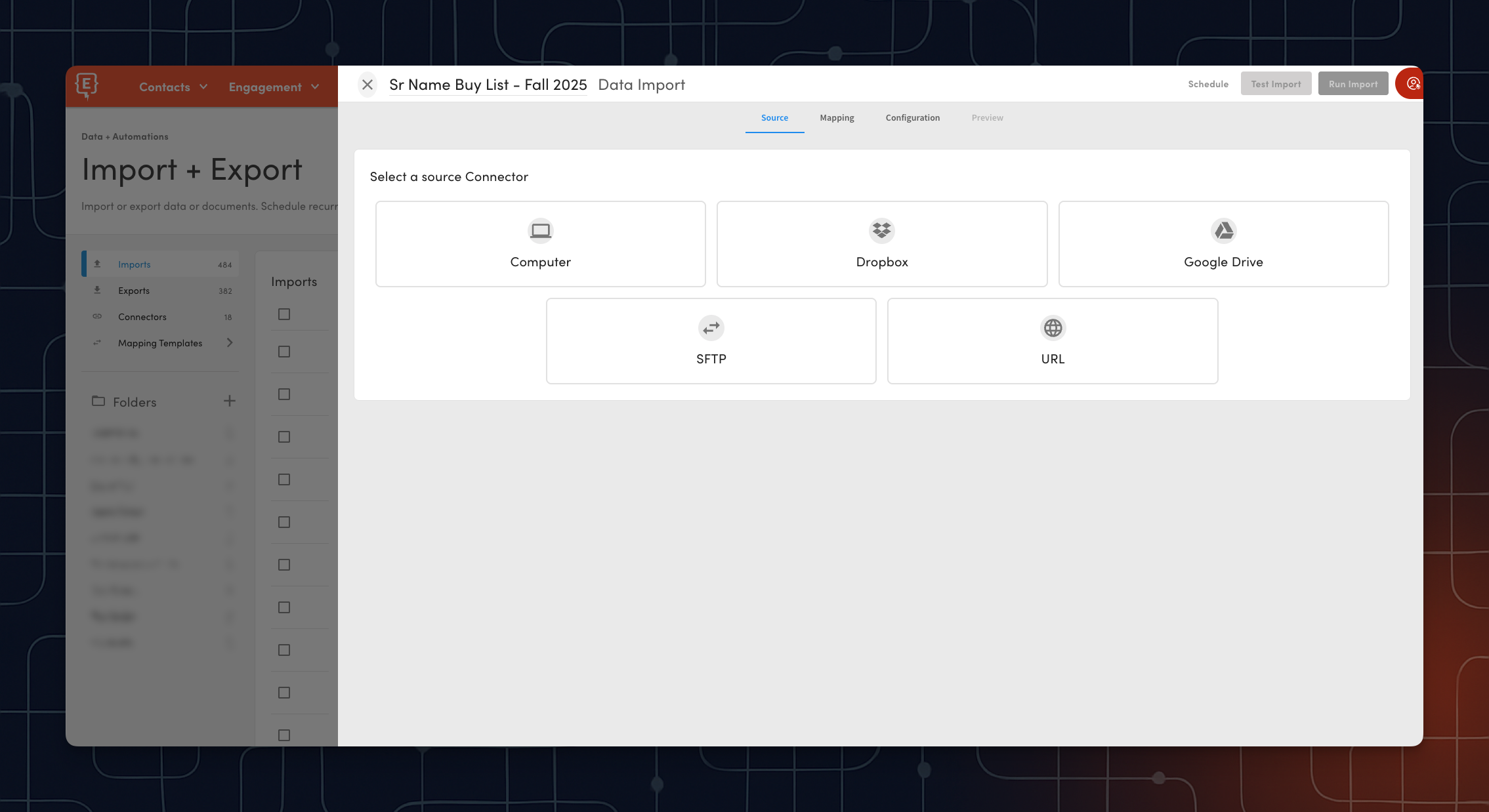
Step 1: Data Import
◉ Upload your list via Import + Export
◉ Automatic validation of email + phone
◉ Instant deduplication against existing database
✨ Pro Tip: Set up Set up scheduled imports for regular list purchases.



Step 2: Segmentation
◉ Create segments based on your goals
◉ Layer in behavioral and demographic data
◉ Set priority tiers for outreach sequencing
✨ Pro Tip: Because agents can personalize content for each student, you can create broader segments without losing relevance. Bolt Agents can tailor messaging to each individual within a broader segment.


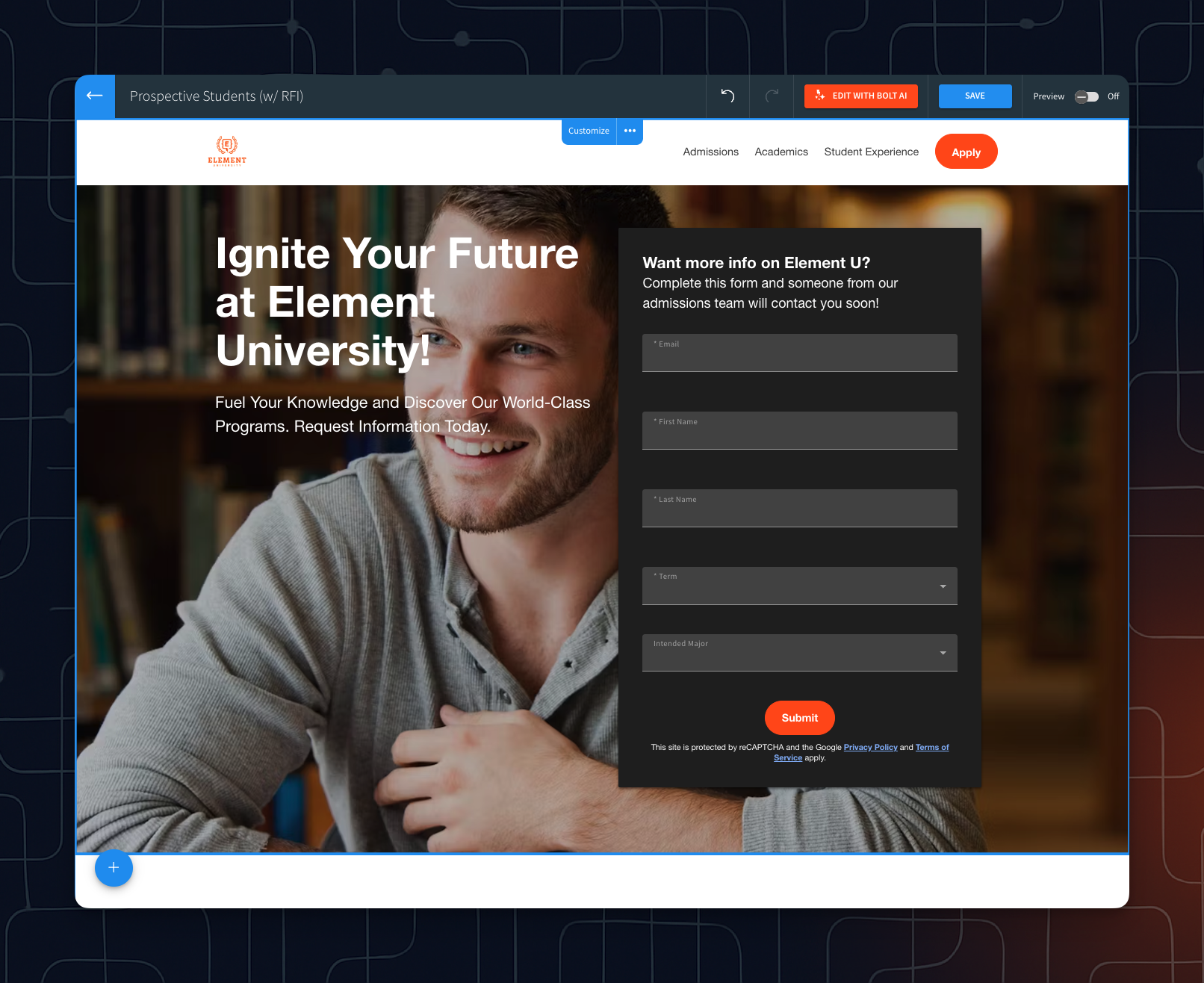
Step 3: Build Conversion Assets
◉ Deploy RFI form (or use existing)
◉ Create program-specific landing pages with Page Builder Agent
◉ And/or embed Element451 forms on your own webpages
◉ Set up conversion tracking and attribution with Source Codes and Bolt Insights
✨ Pro Tip: Keep your RFI forms short—or use a two-step approach with a brief initial form—to increase completion rates. When it comes to form fields, less is more.


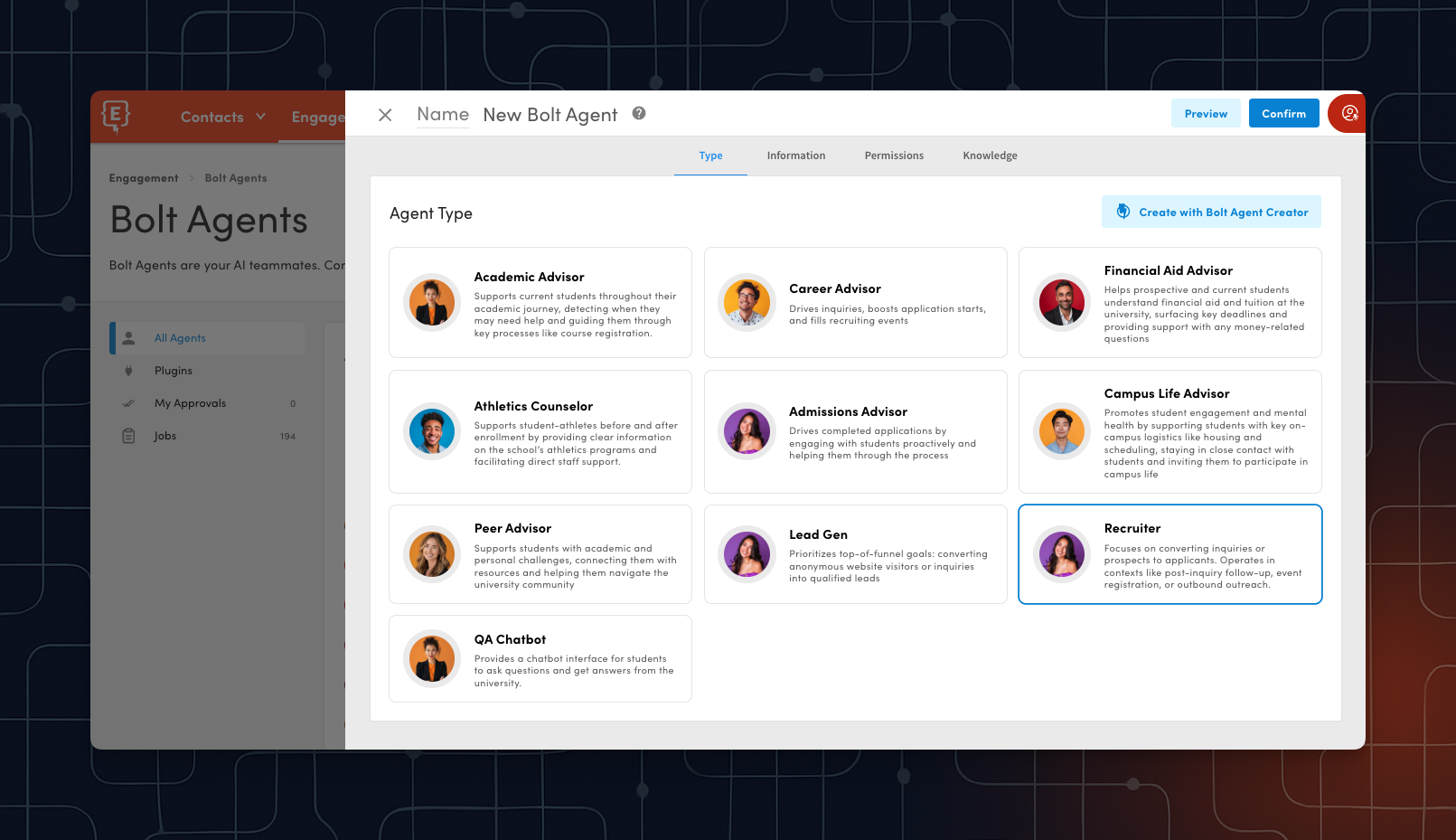
Step 4: Onboard Your Recruiter Agent
◉ Configure Bolt Recruiter Agent with skills
and permissions
◉ Add content to your knowledge hub (viewbooks, FAQs, program webpages)
◉ Set communication preferences
and guardrails


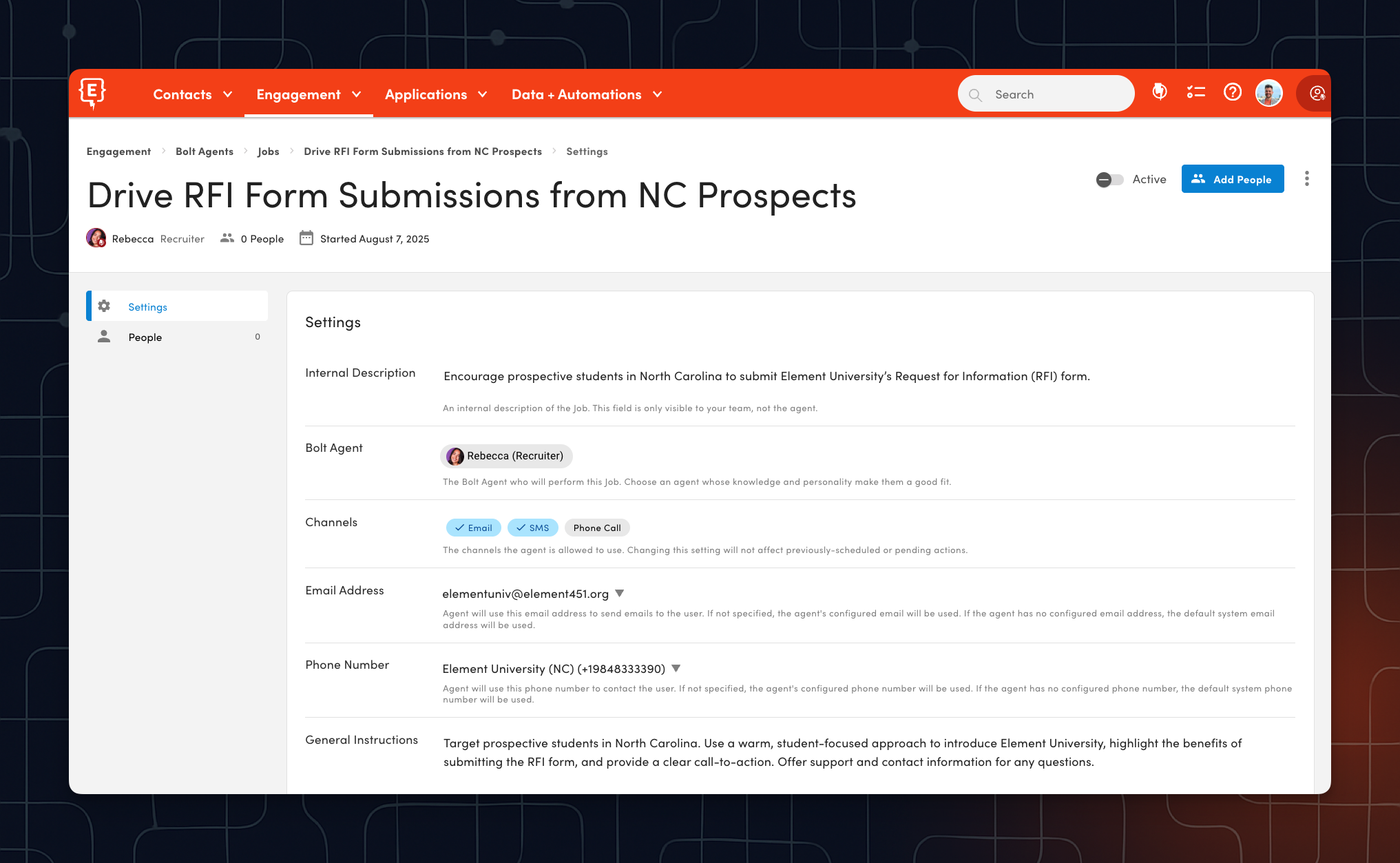
Step 5: Create Job(s) for the Recruiter Agent
◉ Use the Job Builder Agent to create targeted outreach jobs
◉ Set goal to "Submit form"
◉ Set actions to "Make introduction"
and "Promote form"
◉ Craft clear and specific instructions
◉ Define approval workflows based on your required level of control
✨ Pro Tip: Consider creating a Bolt Agent Job that promotes a campus visit or open house. This action-oriented, value-based goal can prompt students to respond at a higher rate than a simple request for their information.


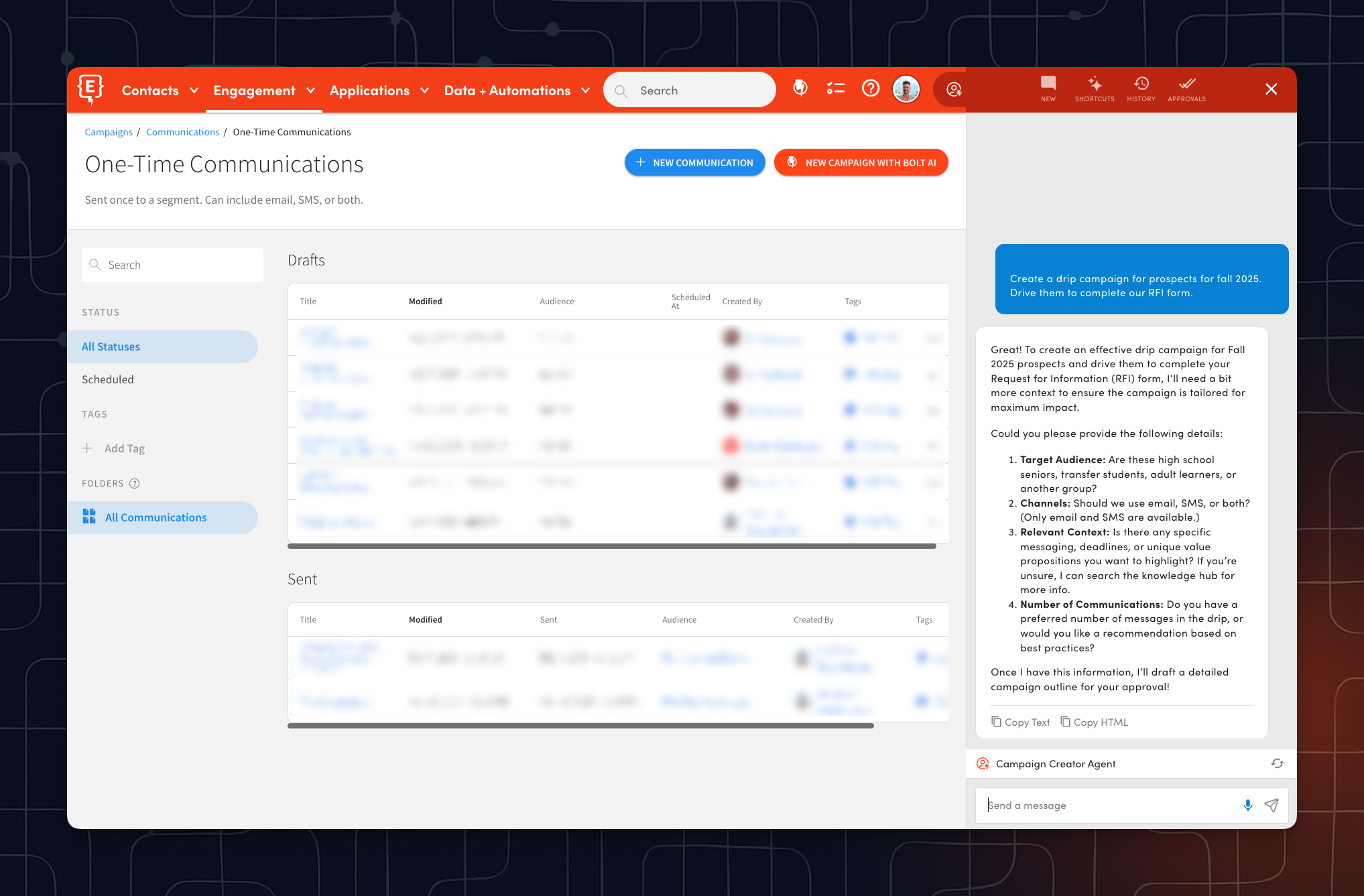
Step 6: Launch Supplemental Campaigns (Optional)
◉ Use existing campaigns or the Campaign Builder Agent to recreate a drip campaign
for reinforcement
◉ Create message versions for personalization
✨ Pro Tip: Bolt Agents adjust the timing of their automated communication via Bolt Jobs based on previous communication history.


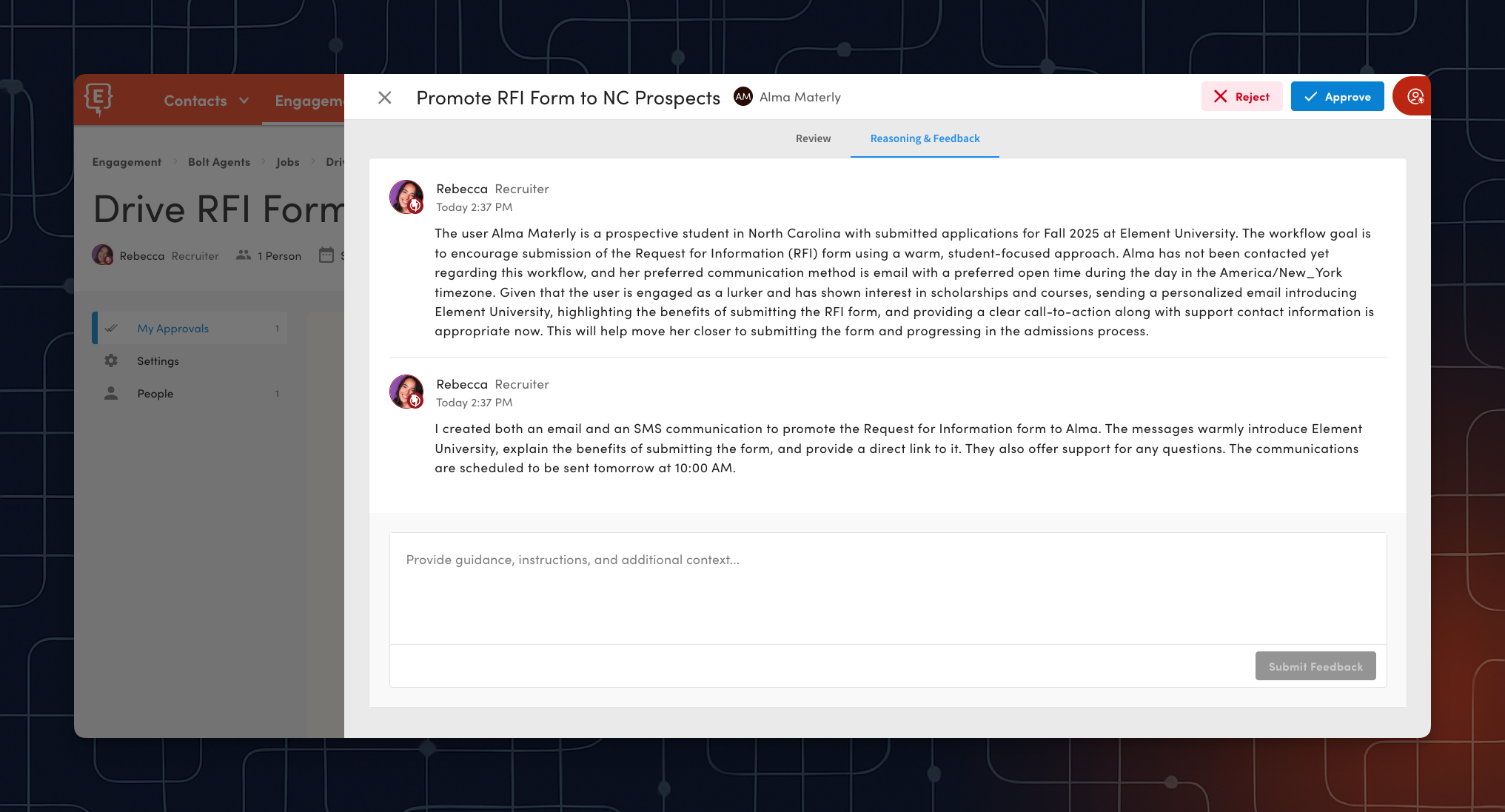
Step 7: Monitor, Learn, Optimize
◉ Review agent performance with Bolt Insights
◉ Process approval queues promptly
◉ Provide feedback to improve agent responses
◉ Adjust segments and messaging based on engagement


The Personalization Payoff
Today’s prospects—raised on Spotify Discover and TikTok’s “For You” feed—expect the same relevance from colleges. An agent team can reference intended major, test scores, distance from home, extracurricular interests and interaction history to craft outreach that feels unmistakably for me.
Example: Sam lives 20 miles from campus and cares about affordability; Priya lives three states away and craves research opportunities. A Recruiter Agent can greet Sam with a cost-calculator link and bus-route note while Priya gets a peer-student quote about lab projects and a virtual-tour invite. Both messages go out based on the most likely times Sam and Priya will respond.
Institutions piloting this depth of personalization have seen click-through rates jump 30–40% when messages reference a program the student already searched—proof that hyper-personalization beats batch-and-blast every time.
Proof That Speed and Relevance Win
Together these data points show that hyper-personalized messages delivered at the speed of student curiosity win the day.
- 3–4 weeks → 1 day: Average time-to-market improvement when agents handle the outreach.
- Continuous search converts better: Schools practicing always-on list buys report “improved response rates” (encoura.org).
- Students opt into texting: 97% welcome texts, and 34% already prefer them according to Modern Campus.
Frequently Asked Questions
What data fields should I buy so agents can personalize well?
How do agents stop duplicates and bad records?
Can staff approve messages before they send?
How is ROI tracked?
What compliance safeguards exist (FERPA, CAN-SPAM, TCPA)?
Do we still need separate email or SMS tools?
What if a prospect asks a nuanced question?
Book a consult now.
Ready to See It Live? Spin up your Prospect Search playbook in 15 minutes.





